One day everything may have seemed fine with your tree or shrubs. Then the next, you might be suddenly noticing concerns such as twig dieback, stunted growth, or premature leaf drop. You’re not sure if you have an insect problem or something else going on but you’re worried it’s killing your tree.
It very well could be that you have scale insects on your trees. All of the symptoms mentioned above are signs of a scale infestation. Oftentimes the signs of a scale problem are not noticeable until the damage is severe. Though it may appear that one day your tree is fine and the next it’s not, the damage was slowly happening over a number of years.
Why Do My Trees & Shrubs Look Sick?
Because scale insects on plants can be so damaging, it’s important that you identify these pests as early as possible and begin treatment. Unfortunately, if an infestation is bad enough, it’s possible that you could lose the tree. In most cases, the sooner you begin treatment, the better chance you have of saving the tree.
We know that understanding what is wrong with your tree may be confusing, which is why we’ve put together this helpful guide. Before you can take action, you must identify the problem. This information will help you learn about common scale insects and make a wise choice when it comes to the care of your trees.
What are Scale Insects?
Generally speaking, scale insects are sap-feeding insects that are named for the scale that covers and conceals their bodies.  It is a shell-like waxy covering. Depending on the species, you may find scale on tree branches, stems, foliage, or fruiting bodies. Scale insects feed by using their sucking mouthparts to suck sap from trees and shrubs.
It is a shell-like waxy covering. Depending on the species, you may find scale on tree branches, stems, foliage, or fruiting bodies. Scale insects feed by using their sucking mouthparts to suck sap from trees and shrubs.
Scale on trees and shrubs is admittedly very difficult to detect. This is largely due to the fact that scale is so small (most range in size from ⅛ to ¼ inch) and that adult scale insects do not move a lot.
In fact, once a mature adult scale has settled into place to feed, it never moves again. It becomes firmly attached to the stems or leaves of your tree or shrub, covering itself with a waxy material that both protects and hides it. It may just look like “bumps” on a branch, or even small flecks that is barely recognizable. This allows scale to go unnoticed until there is a major infestation causing problems.
Identifying Scale on Trees and Shrubs
To say there are many different types of scale is a bit of an understatement. In fact, more than 8,000 species of insects that fit the classification of scale exist. Some are more prevalent than others.
Here are six types of scale that we find most often.
1. Magnolia Scale
Native to the United States and commonly found in the Eastern part of the country, magnolia scale is one of the largest scale insects there is. Given its name, it probably comes as no surprise that it only feeds on magnolia. The magnolia scale is pinkish-orange or brown in color and covered with a white, waxy coating.
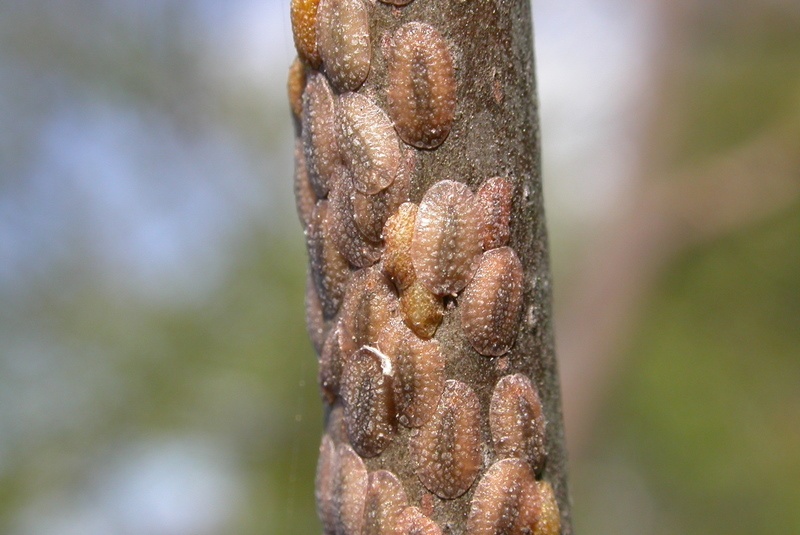 It also secretes an abundance of honeydew (sticky, sugar-rich material) which also attracts flies, ants, bees, and other insects to the area. You might also notice a black sooty mold growing on it after some time.
It also secretes an abundance of honeydew (sticky, sugar-rich material) which also attracts flies, ants, bees, and other insects to the area. You might also notice a black sooty mold growing on it after some time.
An infestation of magnolia scale can lead to a reduction in foliage and flower production. If it goes undiagnosed, it can also lead to the tree’s death.
2. Elongate Hemlock Scale
Sometimes referred to as the fiorinia scale, this is a serious armored scale insect pest of hemlock, though this pest will also feed on cedar, pine, and yew. This particular scale insect is believed to have been unintentionally introduced into the United States from Japan.
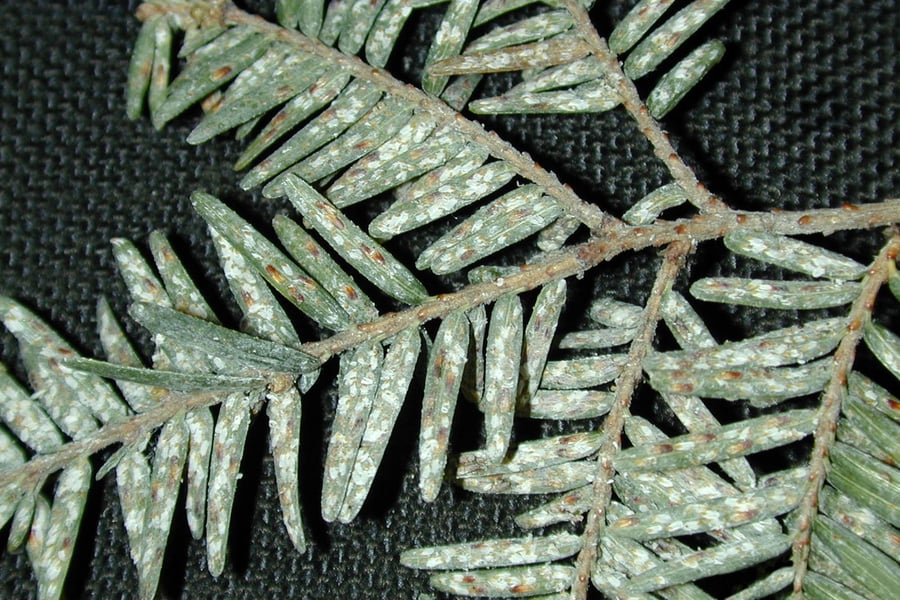
Elongate hemlock scale is found almost exclusively on the underside of a tree’s needles. If it is a heavy infestation, trees may have yellow blotches or stunted needle growth. Because it is commonly found on the underside of needles, it can be difficult to spot until the entire plant begins to dull. If able to cause enough damage, elongate hemlock scale can eventually lead to a tree’s death.
3. Fletcher Scale
Fletcher scale (sometimes referred to as arborvitae soft scale) is a soft scale insect and a common pest of arborvitae though it has also been known to attack juniper, cypress, and hemlock. Fletcher scale is yellowish brown to tan in color and almost hemispherical in shape.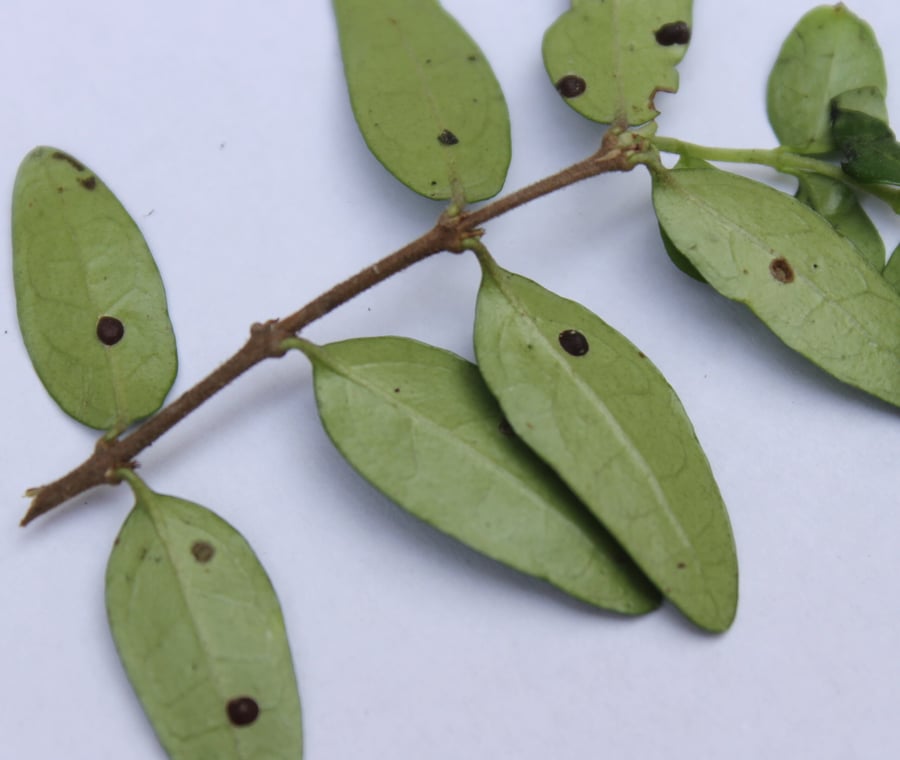 Due to its tiny size (only ⅛ inch) fletcher scale can be difficult to spot. It can also blend in very well with the rest of the tree. Like some other types of scale, it secretes honeydew, which can attract additional pests to the area. Heavily infested plants may also develop a black mold growing on the secreted honeydew.
Due to its tiny size (only ⅛ inch) fletcher scale can be difficult to spot. It can also blend in very well with the rest of the tree. Like some other types of scale, it secretes honeydew, which can attract additional pests to the area. Heavily infested plants may also develop a black mold growing on the secreted honeydew.
4. White Prunicola Scale
Also known as “White Peach Scale,” these particular type of scale insects are pests of various woody ornamental trees and shrubs. White Prunicola Scale is thought to have originated in Japan or China but is currently found all over the world.
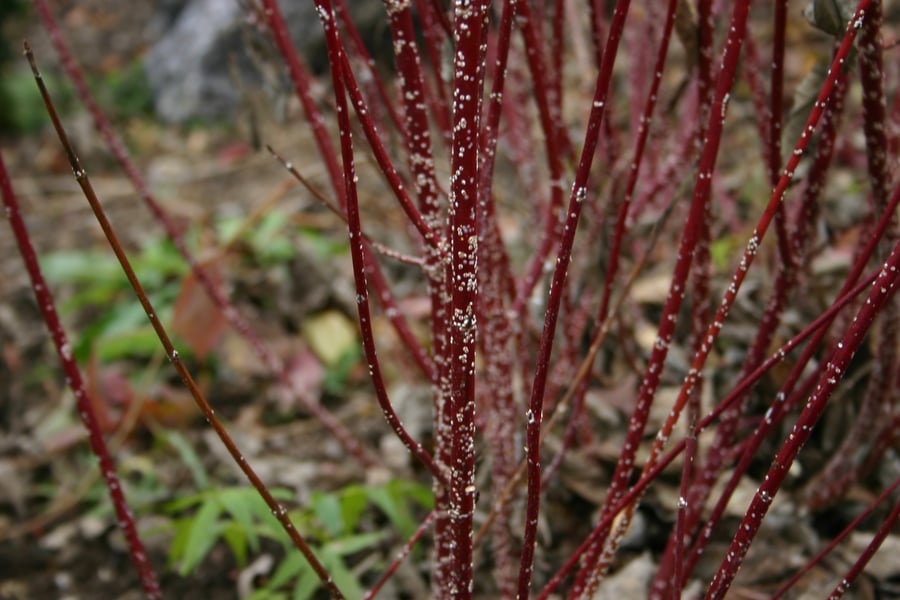
While some types of scale are easier to control than others, White Prunicola Scale tends to be one of the most difficult. Expect that it may take several rounds of treatment in order to get this pest under control.
5. Pine Needle Scale
The pine needle scale is a key pest of pines in the landscape. Pine needle scale is characterized by its crimson red eggs, apparent in early spring beneath the females’ white waxy cover. Under each scale, as many as 40 eggs may be found. These will hatch into “crawlers” in mid- to late-May.
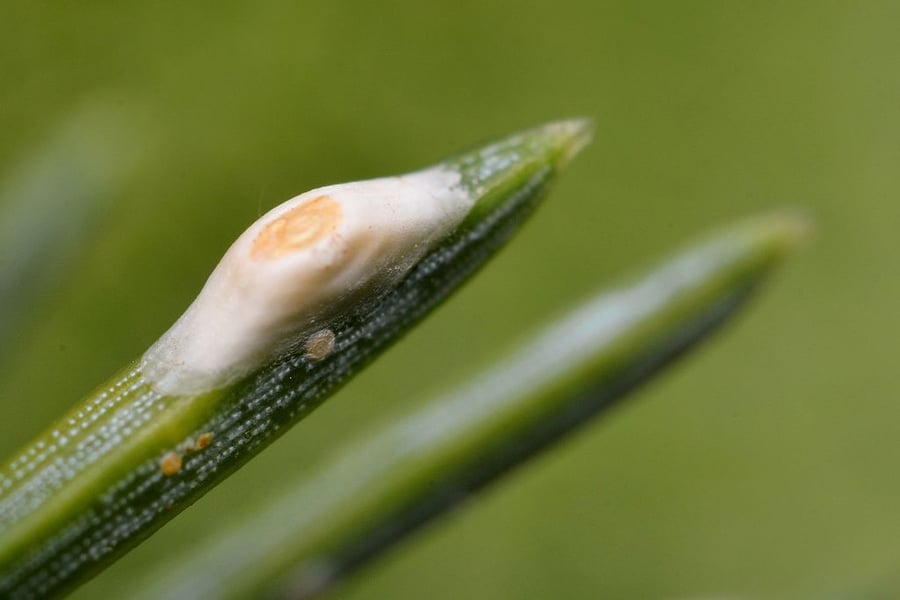
Crawlers typically reach maturity by early July. Like other types of scale, pine needle scales damage trees by using their sucking mouthparts to drain sap. The foliage of a pine tree severely infested with scale may take on a white-washed appearance.
6. Tuliptree Scale
The tuliptree scale is one of the largest soft scale insects in the country. It is commonly misidentified as magnolia scale as it is similar in appearance and has a similar life cycle. Besides the tuliptree, this scale may also attack magnolia or linden trees.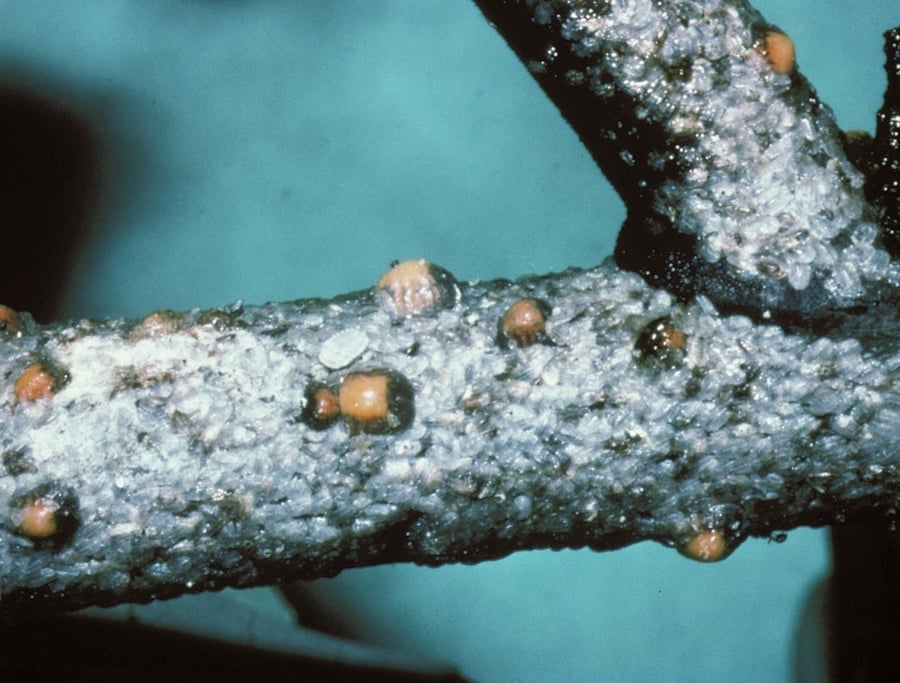
The mature tuliptree scale caries in color from light gray to pinkish orange while the “crawler” stage of this insect is dark red. One of the first signs of an infestation of tuliptree scale is the abundance of honeydew.
Understanding Scale Insects Lifecycle
Most types of scale lay eggs. When the eggs hatch, pests known as “nymphs” emerge. Nymphs are also commonly called “crawlers” since they have legs and walk away from the maternal scale to settle at a new feeding site. For most scale, this is the only time in their life cycle that they will crawl about on the plant. These crawlers are typically unable to be seen by the human eye and require magnification for detection.
Once scale on trees and shrubs settles down in their feeding location, they stay put. In fact, nymphs and adult females (for most types of scale) will remain in this location for the rest of their lives. Adult males, on the other hand, are small flying insects that will fly to new females for mating.
It’s quite possible that scale insects will produce one to four generations each year based on the species and weather conditions.
Scale on Trees Treatment
The anatomy of scale insects makes them inherently difficult to treat. That’s because the waxy “scale” coating on their body provides a protective barrier to traditional insecticides. That’s why it’s important to incorporate a plant health care program that takes a multi-faceted approach to treating scale.

A variety of practices will likely be needed in order to truly control scale. The majority of scale insects that we see in landscapes can be controlled with the following approach.
- Appropriately timed applications (most likely in early spring or fall) of horticulture oil, which will help smother as many scale insects as possible.
- Professional applications of targeted insecticides during time frames when new generations of scale crawlers have hatched and are less protected than their adult counterparts.
- The use of additional soil-applied products that will get absorbed by the root system and translocated to the bark, buds, leaves, and needles will also help with certain types of scale.
- Injecting additional material into the tree trunk for certain scale insects.
Determining the right course of action will be dependent upon identifying the scale insects on your trees and shrubs. This is key as not every product will work on every type of scale. And while some scale can be easy to control, and one treatment will make a world of difference, some types of scale are very difficult to get control and require multiple repeated applications.
Preventing Scale Insects on Trees and Shrubs
In the world of arboriculture, prevention is key when it comes to destructive pests such as scale insects. That’s because once your trees or shrubs are already infested, it can be much more difficult to get a handle on the situation.
It’s also worth mentioning that a single type of scale insect might not be your only problem. We often see trees that are dealing with multiple issues. In addition to scale, they might also be suffering from disease, a second or third pest problem, or even environmental stressors that are impacting their health. All of this can compound the issue and make it even more complicated to treat.
That’s why focusing on prevention is key.

At Joshua Tree, we offer Arbor Shield, which is our solution for plant health care. This includes three different program options for treatment, each of which aims to protect and improve the trees and shrubs on your property. In addition to protecting your trees and shrubs from scale insects, our plant health care program will also provide protection from other insects, diseases, nutrition deficiencies, and environmental pressures.
With ISA Certified Arborists on staff, we can help you choose a program that is best for your specific property. After all, it takes a customized approach to prevention and treatment that will give you the best possible results.
Choosing What’s Best for your Trees and Shrubs
The fact of the matter is, plants in landscapes are regularly and predictably attacked. If you aren’t taking a proactive approach to plant health care, then you are leaving your landscape vulnerable to attack.
But you can mitigate that risk. By being proactive, you can prevent your trees and shrubs from destructive pests and other stressors.

Ultimately, your smart choice in tree care companies will be a critical step in protecting your trees and shrubs from the damage that scale insects can cause. By being proactive, you are also protecting your investment. That means your trees and shrubs can offer you ongoing enjoyment for many more years to come.
If you’d like to find out more about how our plant health care program for your property and protect your trees and shrubs from scale insects and other stressors, then contact us for a free consultation or give us a call at 833-583-8733.
Image Sources: Scale Insects on Tree, Scale Insects on Green Branch, Magnolia Scale, Elongate Hemlock Scale, Fletcher Scale, White Prunicola Scale, Pine Needle Scale, Tuliptree Scale




